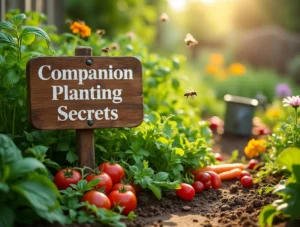Hellebore flowers, also known as the Christmas Rose or Lenten Rose, are winter-blooming plants that bring vibrant color to your garden during the cold months. With a variety of colors and hardy characteristics, hellebores have become popular among gardeners who want their garden to thrive even when most plants are dormant. In this article, we’ll explore the charm, history, and care of hellebore flowers, and why they’re perfect for winter landscapes.
On This Page
The Charm of Hellebore Flowers
Hellebore flowers are unique in their ability to bloom in winter or early spring, defying the usual dormancy seen in most other plants. These beautiful perennials thrive in colder climates, making them an excellent choice for gardeners looking to add a splash of color to their winter gardens. They are not only visually appealing but also low-maintenance, making them suitable for gardeners of all skill levels.
History and Origins of Hellebores
Hellebores have a rich history dating back to ancient times. Native to regions of Europe and Asia, they were often used in folk medicine for various ailments. However, it’s important to note that hellebores are toxic if ingested, so they should be handled carefully.
In mythology, hellebores were believed to have healing properties and were used in rituals to ward off evil spirits. Despite their toxic nature, their beautiful blooms have ensured their popularity in gardens for centuries.
Types of Hellebore Flowers
There are several popular types of hellebore flowers, each offering unique color and shape variations:

- Christmas Rose (Helleborus niger): Known for its white or pinkish-white blooms, this variety flowers around Christmas, hence its name.

- Lenten Rose (Helleborus orientalis): Blooming during Lent, this variety comes in shades of pink, purple, and even speckled designs.

- Helleborus foetidus: This species is known for its striking green blooms, which add an interesting twist to any garden.
These varieties not only differ in color but also in size, offering gardeners plenty of options for creating a diverse and dynamic landscape.
Growing Hellebores: A Gardener’s Guide
Growing hellebores is relatively easy once you understand their needs. They thrive in partial shade and well-drained soil. Here’s a quick guide to help you get started:

- Soil: Hellebores prefer rich, well-drained soil with plenty of organic matter. Ensure your garden soil is not too soggy, as waterlogging can lead to root rot.
- Light: These plants prefer partial to full shade, making them ideal for gardens with little direct sunlight.
- Watering: Hellebores are drought-tolerant but do best with consistent watering, especially during dry periods.
Once planted, hellebores are relatively low-maintenance. They can live for several years without needing to be replanted, making them an excellent investment for any garden.
Why Hellebores Are Perfect for Winter Gardens
One of the most significant benefits of planting hellebores is their ability to thrive in winter. While other plants lay dormant, hellebores provide stunning blooms during the coldest months. Their resilience and ability to tolerate frost make them a must-have for anyone looking to maintain a vibrant winter garden.

Hellebores pair well with other shade-loving plants such as ferns and hostas, creating a rich and textured landscape even in the off-season.
Hellebores in Floral Arrangements
Hellebore flowers are not just beautiful in the garden—they also make excellent additions to floral arrangements. Their long-lasting blooms and unique shapes make them a favorite among florists. When using hellebores in arrangements, be sure to cut them just as the flowers begin to open to maximize their vase life.
To care for cut hellebores:
- Cut stems at an angle to ensure they can absorb water properly.
- Use floral preservatives in the vase to extend their life.
Pests and Diseases: Keeping Hellebores Healthy
Hellebores are generally resistant to pests and diseases, but they are not immune. Common issues include:
- Black Spot: This fungal disease causes dark spots on leaves. Remove affected foliage and ensure proper air circulation around your plants.
- Aphids: These small pests can suck sap from hellebore leaves. Use insecticidal soap to keep them at bay.
By monitoring your hellebores regularly, you can quickly address any issues and keep them healthy year-round.
Conclusion: The Resilient and Elegant Winter Blooms
Hellebore flowers are a perfect addition to any garden, offering color, resilience, and beauty when most other plants are dormant. Whether you’re a seasoned gardener or a beginner, hellebores are easy to grow and care for, making them an excellent choice for winter gardens.









